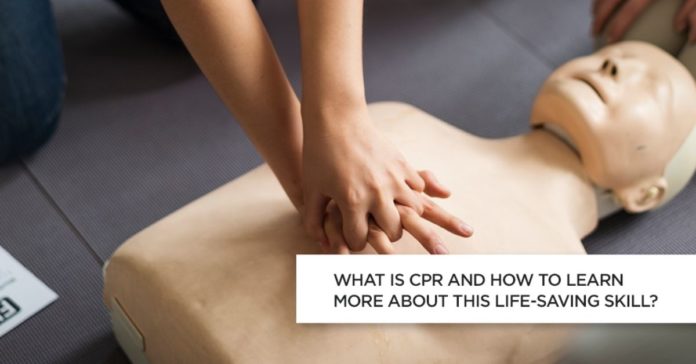CPR stands for Cardio-pulmonary resuscitation. It is an emergency treatment to temporarily circulate oxygenated blood to the brain of an individual whose heartbeat has stopped.
CPR proves to be life-saving in a heart attack or close to drowning cases, where victims’ heartbeats have stopped and require immediate treatment. Expertise is not necessary when someone’s life is at stake; basic knowledge is enough. Having CPR knowledge can make you the life-saving hero in someone’s life.
Why do we need CPR?
The blood flow ceases when an individual suffers a cardiac arrest due to circumstances such as a heart attack, choking, or drowning. In such cases, the heart stops pumping oxygenated blood to the brain and other vital organs.
However, biologically, such a person can still be resuscitated by quickly restoring the flow of blood to the brain and other vital organs. There are about ten minutes between clinical death and biological death, which gives us a chance to keep the brain alive and save the individual’s life. CPR can help keep the brain alive by pumping blood to the brain with external chest compressions and rescue breaths.
Who can perform CPR?
CPR can be performed by trained medical professionals as well as laypersons . While certain techniques need to be followed for administering CPR, it is advisable to perform CPR as per your knowledge rather than being a bystander and witness someone lose their life.
What are the things to do pre-CPR?
Before you start administering CPR, here are a few things you should check:
● Is the environment safe for administering CPR?
● Is the person in need conscious or unconscious?
● If the person is conscious, keep talking to the person to keep him in that state. Keep asking questions to elicit a response.
● Call emergency services ASAP.
● See if there are any medical professionals available in the vicinity. If they are, ask them to carry out the procedure.
● Don’t panic. Panic can lead to you making a mistake .
How to perform CPR?
Remember the C-A-B acronym to ensure that you correctly perform CPR. C-A-B stands for Compressions-Airflow-Breathing. Following these guidelines will ensure that the CPR method is carried out correctly.
Compressions: Compressions are performed to restore the blood circulation in a person. The steps to perform compressions are:
● Place the individual on their back.
● Get on your knees alongside the person’s neck.
● Put the heel of one hand over the centre of the chest of the victim. There is a huge misconception that CPR must be performed by placing the hands on the left side of the body.
● Place your other hand on top of the first hand. Ensure your arms and shoulders are perfectly straight.
● Use your upper body strength and compress the victim’s chest at least a couple of inches. Also, ensure that you don’t compress beyond 2.4 inches.
● Keep compressing hard at the rate of 100 to 120 compressions per minute.
● If you aren’t trained professionally in delivering CPR, keep performing compressions until you see signs of movements in the individual or medical professionals take over.
● Next, you can proceed to open the airway.
Opening the airway: If you are a trained individual, you need to open the person’s airway using the following steps.
● Put your palm on the person’s forehead and lift their chin to tilt their head backward gently.
● Gently open the airway by lifting their chin forward, using your other hand.
Rescue breathing: Rescue breathing is a form of artificial ventilation to assist or stimulate respiration in an individual. Here are the steps to carry out rescue breathing.
● With the person’s airway open, pinch the nostrils shut.
● Administer mouth to mouth breathing by covering the person’s mouth with yours.
● Give the first rescue breath of one second.
● Pay close attention to the chest and watch if it rises. Continue the process by giving another breath.
● In case the chest doesn’t rise, repeat the process of head-tilt and chin-lift before giving the next breath.
● Make sure to complete one cycle consisting of thirty chest compressions followed by two rescue breaths.
● Resume compressions after two breaths and repeat the cycle.
● Use an automated external defibrillator, if available.
● Administer one shock, followed by CPR for two more minutes before giving the second one.
● If an AED is not available or you aren’t trained to use one, call emergency services and continue with the CPR cycles until you notice movements.
Summing it up
Administering CPR correctly can make the difference between someone’s life and death. It is advisable to be informed and educated about the technique you might require to use at some point in your life.
You can undertake a CPR training course to learn and master the CPR technique. Similarly, you can practice the basic steps, with a dummy, or a known individual, if you aren’t willing to take a professional course. Whatever the case, knowing about this life-saving skill is essential as it can help you become a savior for someone, especially your loved ones.
Click Here : Complete Heart Care Blogs


















